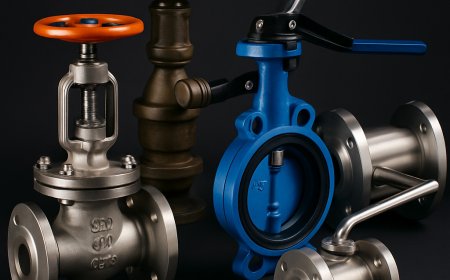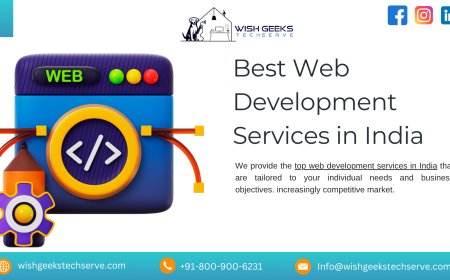Automation Testing with Python: A Quick Start Guide
Kickstart automation testing with Python using this quick guide covering tools, frameworks, and best practices for efficient and reliable test automation.

Delivering high-quality software on time is more crucial than ever in the rapidly evolving IT industry of today. Many businesses are switching to automated testing since human error can happen during manual testing, which can take a lot of time. A popular option for test automation is Python, which is renowned for its easy-to-understand syntax. Python provides a simple starting point for automated testing, regardless of your level of programming experience or desire to enhance your testing procedure.
This blog will walk you through what automation testing is, why Python is a great option, the tools you can use, and the key concepts you should understand to get started without diving into complex code.
What is Automation Testing?
Automation testing is the practice of testing programs automatically with software tools. It replaces repetitive manual tasks with scripts and tools that ensure speed, consistency, and accuracy. As software becomes more complex, companies increasingly rely on automation to maintain quality across updates. Through structured Programming Courses in Chennai, learners can understand the practical benefits of automation and how it contributes to reliable software delivery in real-world environments.
Automation testing helps teams:
-
Save time and effort
-
Detect bugs earlier in the development process
-
Improve the reliability of the software
-
Enable continuous testing in DevOps pipelines
Why Choose Python for Automation Testing?
Python is popular among beginners and experts because of its clear, concise language structure. You dont need to have a background in computer science to understand Python. Its readable, similar to English, and supported by a large number of helpful libraries and tools.
Here are a few reasons Python stands out in automation testing:
-
Easy to learn and use: Perfect for novices.
-
Wide community support: Find solutions and tutorials quickly.
-
Flexible and powerful: Works well for both small and large testing projects.
-
Cross-platform compatibility: Run tests on Windows, macOS, or Linux.
Popular Python Tools for Automation Testing
Python offers a variety of tools that help simplify automation testing:
-
Selenium a well-liked web application automation tool. It mimics real-user behavior by interacting with the browser.
-
PyTest A lightweight testing framework thats great for building simple to advanced tests.
-
Robot Framework A keyword-driven framework that's perfect for non-programmers.
-
Behave Ideal for behavior-driven development (BDD), which makes it easier for non-developers to understand test scenarios.
These tools often come with pre-built commands and documentation, making it easier for you to get started without writing too much code. This is especially helpful when building a REST API using Flask, where simplicity and flexibility allow developers to create and test endpoints quickly with minimal setup.
Steps to Start Automation Testing with Python (Conceptual Overview)
Even without diving into code, its important to understand how automation testing works at a high level:
-
Test Planning: Identify what needs to be tested, such as login pages or contact forms.
-
Tool Selection: Choose the right tool based on your testing needs (e.g., Selenium for web testing).
-
Writing Test Scenarios: Write out your test steps in simple language. For example, "Open the website," "Click login," "Enter username and password," etc.
-
Running Tests: Use tools like Selenium or Robot Framework to execute the tests.
-
Analyzing Results: View the output to understand if the application passed or failed the test scenarios.
-
Reporting and Maintenance: Review the results, share reports with the team, and update tests as the application evolves.
By attending a structured Python Training in Chennai, learners can understand these steps in an organized way, combining theoretical knowledge with live demonstrations. This approach helps in visualizing how automation fits into software development life cycles.
Best Practices for Beginners
If you're just starting out, here are a few friendly tips:
-
Start small: Start by automating basic processes such as verifying that a button functions or that a page opens.
-
Use tools with graphical interfaces: Tools like Robot Framework or Katalon Studio make testing easier without needing to code.
-
Join online forums or communities: Pythons large community is always ready to help.
-
Be consistent: Test regularly and keep improving your test cases over time.
Benefits of Automation Testing with Python
Automation testing with Python offers more than just convenience it brings real value to your projects:
-
Faster test execution: Tests that once took hours can be completed in minutes.
-
Reusable test scripts: Once created, you can run the same tests across different versions of your application.
-
Improved accuracy: Automated testing lower the possibility of human error leading to bug misses.
-
Scalability: You can test more features as your software grows.
Many companies look for professionals who understand the fundamentals of automation testing and Python. Gaining this knowledge, even at a high level, can improve your career opportunities.
Automation testing doesnt have to be intimidating or overly technical. With Python and its supportive ecosystem, you can start testing applications efficiently even without deep coding knowledge. From simple form submissions to complex workflows, automation testing allows teams to build better software faster and more reliably.
If you're exploring a career in software testing or want to streamline your development process, automation testing with Python is a great place to begin. Focus on learning the concepts, understanding the tools, and using community resources to grow your skills over time. Since Python is widely used in Data Science and Machine Learning as well, gaining proficiency in it can open doors to multiple tech domains beyond testing.







































